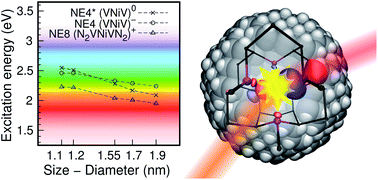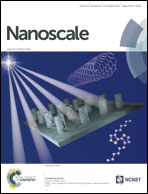Single nickel-related defects in molecular-sized nanodiamonds for multicolor bioimaging: an ab initio study
Abstract
Fluorescent nanodiamonds constitute an outstanding alternative to semiconductor quantum dots and dye molecules for in vivo biomarker applications, where the fluorescence comes from optically active point defects acting as color centers in the nanodiamonds. For practical purposes, these color centers should be photostable as a function of the laser power or the surface termination of nanodiamonds. Furthermore, they should exhibit a sharp and nearly temperature-independent zero-phonon line. In this study, we show by hybrid density functional theory calculations that nickel doped nanodiamonds exhibit the desired properties, thus opening the avenue to practical applications. In particular, harnessing the strong quantum confinement effect in molecule-sized nanodiamonds is very promising for achieving multicolor imaging by single nickel-related defects.


 Please wait while we load your content...
Please wait while we load your content...